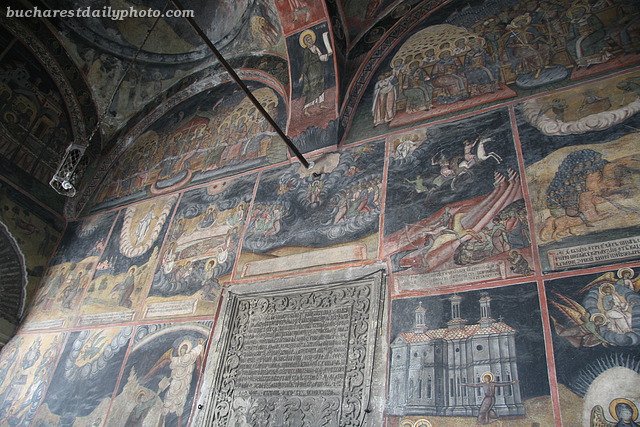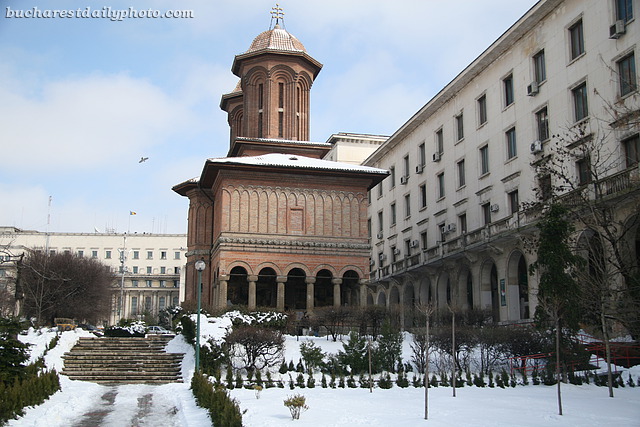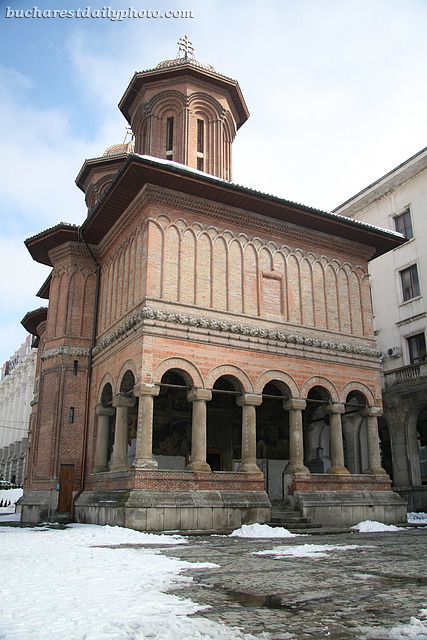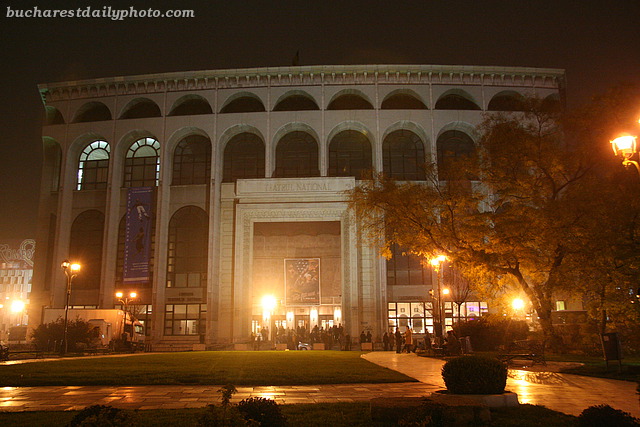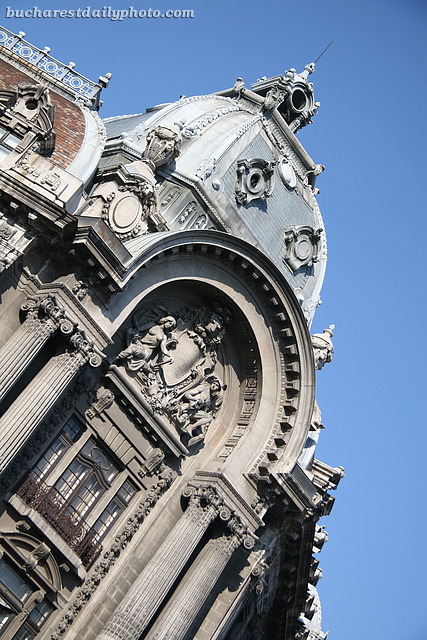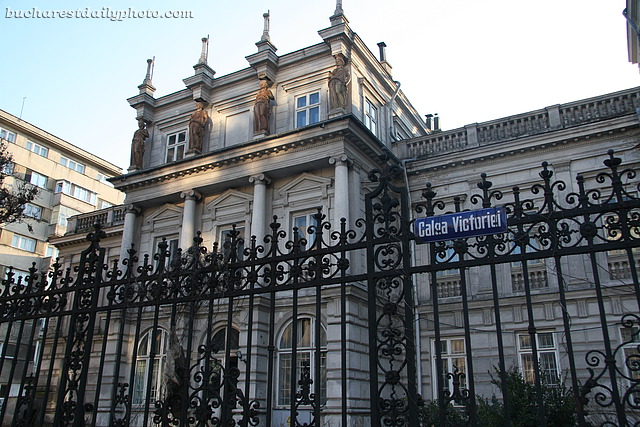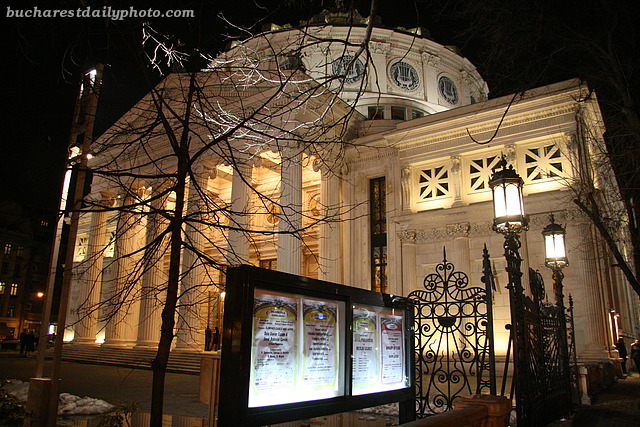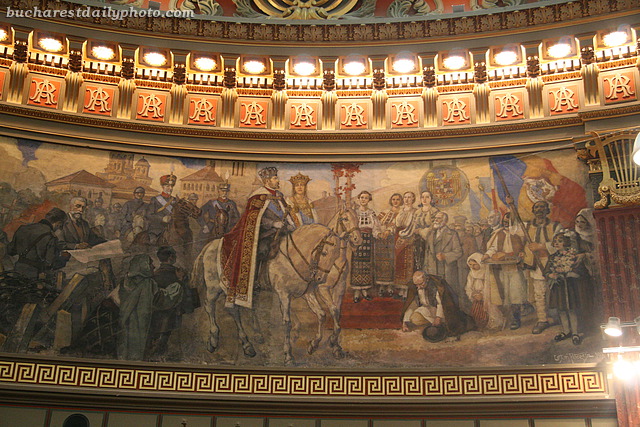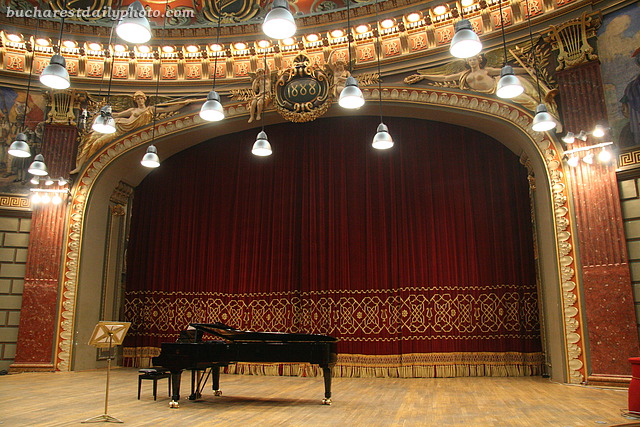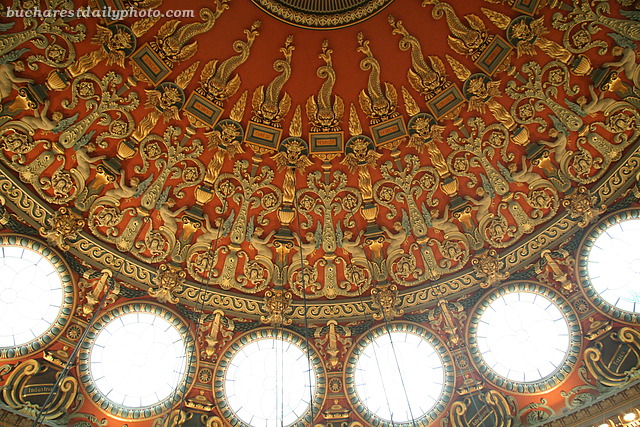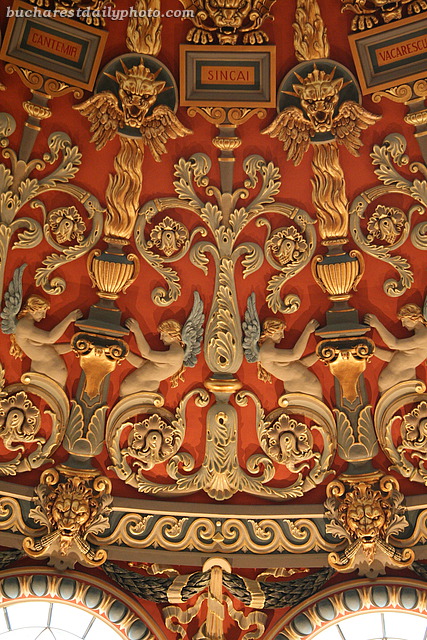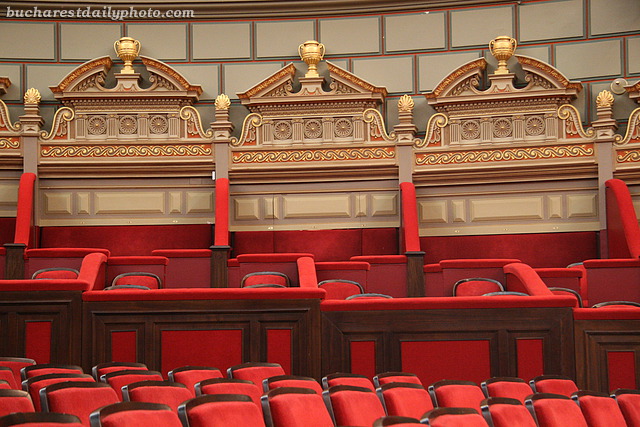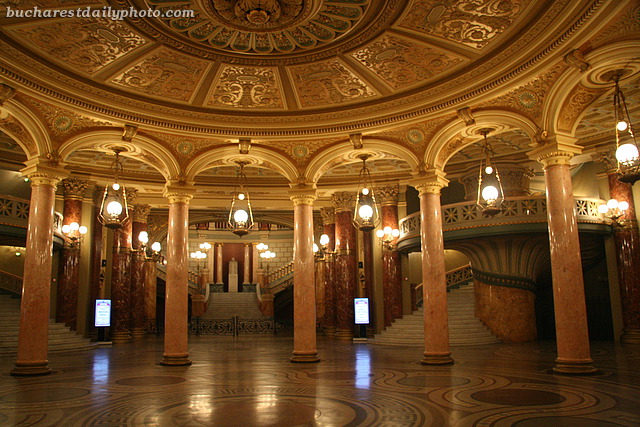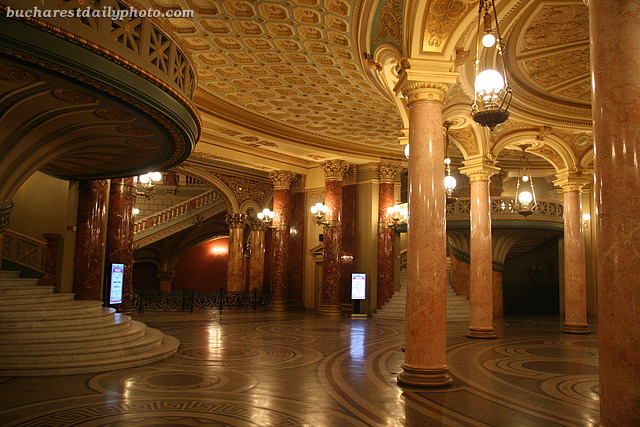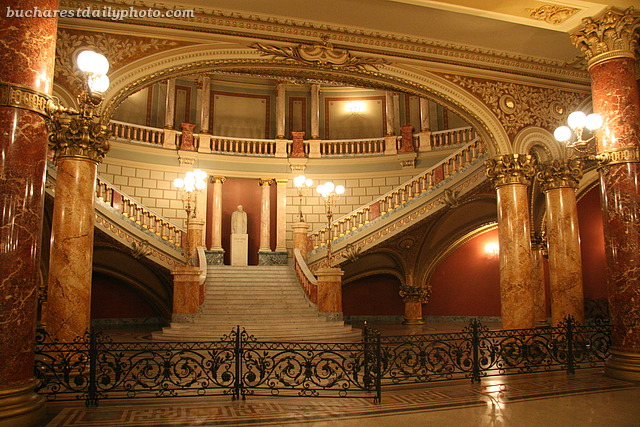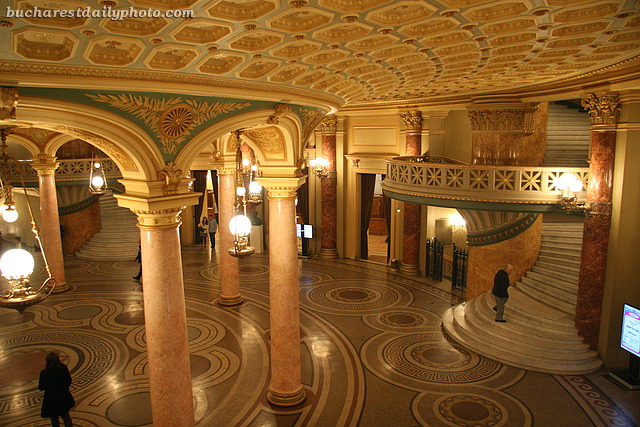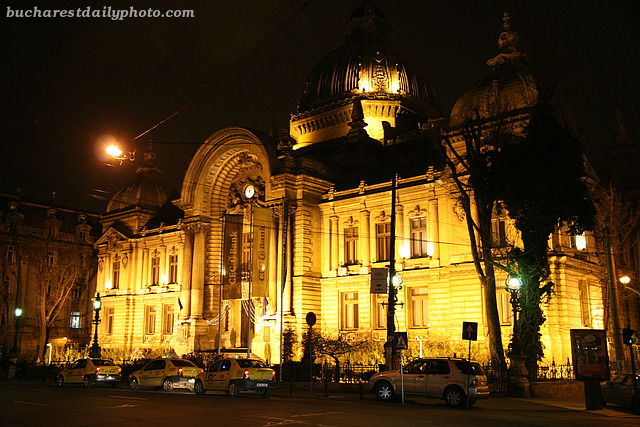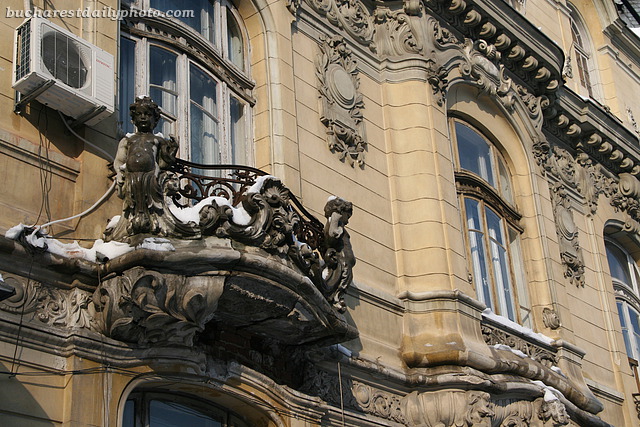On the road and struggling with a slooow Internet connection so I’ll keep it short. Today’s photo shows the beautiful frescoes of the Kretzulescu church’s porch.
Kretzulescu Church aka Creţulescu Church is an Eastern Orthodox Church located on one of the corners of the Revolution Square, by the former Royal Palace. This red brick beauty is one of the oldest churches in Bucharest, being built between 1720-1722 by the boyar Iordache Cretulescu and his wife Safta, a daughter of prince Constantin Brâncoveanu. The church is built in the style created by Constantin Brâncoveanu, a seventeenth century ruler of Wallachia, who commissioned numerous buildings during his reign and set out to create a distinctive national genre of architecture. The exterior of the church was originally painted, but the paint was removed during the 1935-1936 renovations, conducted by architect Ştefan Balş. More renovations were done after the 1977 earthquake and the Revolution of 1989. During the communist regime the church was scheduled for demolition but it was saved through the intervention of architects.
In my earlier post about Bucharest’s National Theatre I’ve talked about its facade being remodeled in 1984, which lead to the version which can be seen in today’s photograph. The theatre is scheduled to undergo renovation soon and if everything works as planned in two years we will admire a new facade, similar to the 1973 version!
Today, the City Daily Photo blogging community pays tribute to Eric Tenin of Paris Daily Photo. Five years ago, on March 11th 2005, Eric started his daily photo blog of Paris and he’s been blogging ever since without missing one day. It was his blog that I found last summer while researching for a trip to Paris, and that inspired me to create this photo blog of my home city. To celebrate his 5th anniversary and honor Eric, the suggestion for today’s theme was to use one of his photographic techniques, be it the placing of the camera on the ground to make an image, or of skewing/tilting the composition. Click here to view thumbnails for all participants
The photograph shows the building which now holds the National Library of Romania and which before 1955 used to be the Palace of Stock Exchange. It was built in French Neoclassical style, between the years 1906 and 1911, after plans by architect Ştefan Burcuş.
The Victory Avenue (Calea Victoriei in Romanian) is one of Bucharest’s most important avenues. It was built as a main road in 1692 under orders from Constantin Brâncoveanu who needed a road to link his palace at Mogoşoaia with the Old Court. In the beginning the street was known as Podul Mogoşoaia aka Mogoşoaia Bridge, because it was paved with wood. In 1878, after the Romanian War of Independence, the victorious Romanian army entered the capital and marched along this avenue, and that’s when the name changed to Victory Avenue. Between the two world wars Calea Victoriei became one of the most fashionable streets of the capital. Following this avenue from United Nations Square (Piaţa Naţiunilor Unite in Romanian) to Victory Square (Piaţa Victoriei in Romanian) you’ll find some of the most beautiful buildings in Bucharest. Among these are the Naţional History Museum, the National Savings Bank or CEC building, the National Military Circle, Capşa House, the Art Deco Telephone Palace, the Creţulescu Church, the Central University Library, the Romanian Athenaeum, the Royal Palace which today houses the National Art Museum and the Cantacuzino Palace. I’ve already posted photos of some of these buildings on this blog and you can see them by following the “Victory Road” label. Today’s photo shows the classical facade of another beautiful building lining Calea Victoriei, Ştirbei Palace. It was built in 1833-1835 after plans by architect Michel Sanjouand.
Finally, a last shot (for a while) of the Athenaeum, all lit up and ready for the show.
For today a few photos from the Athenaeum’s concert hall. It has a circular shape, 600 seats and 52 loggias. The circular wall is decorate with a fresco freeze showing moments from Romanian history which was painted in 1933-1938 by Costin Petrescu. The hall has excellent acoustics.
Last week I’ve showed you the inside of the National Opera and today I’m following up with another cultural venue, more precisely with photos showing the inside of the Romanian Athenaeum. The Athenaeum is one of my favorite buildings of Bucharest. I think of it as something representing Bucharest, a bit like the Eiffel Tower defines Paris. Unfortunately I’m probably alone in my thinking, as most people identify Bucharest with the larger than life Palace of Parliament (and who knows… they may be right). Today’s photos show the main lobby of the Athenaeum whose central part is supported by 12 columns. The main auditorium is located above this lobby and to get there you have to climb one of the four marble stairs open to the public. There’s also a fifth central stair which is probably reserved for special occasions.
Finally! The temperature is above zero. To be more exact my outside thermometer is registering 5 degrees Celsius at this moment (2PM). It’s the second time the temperature raised above zero in the last week (the other time it happened was on Tuesday). Snow’s melting and walking the sidewalks in the city center feels like being in the shower because of the water dripping from the roofs. Which is why the statues in today’s photographs look like they just took a bath.
